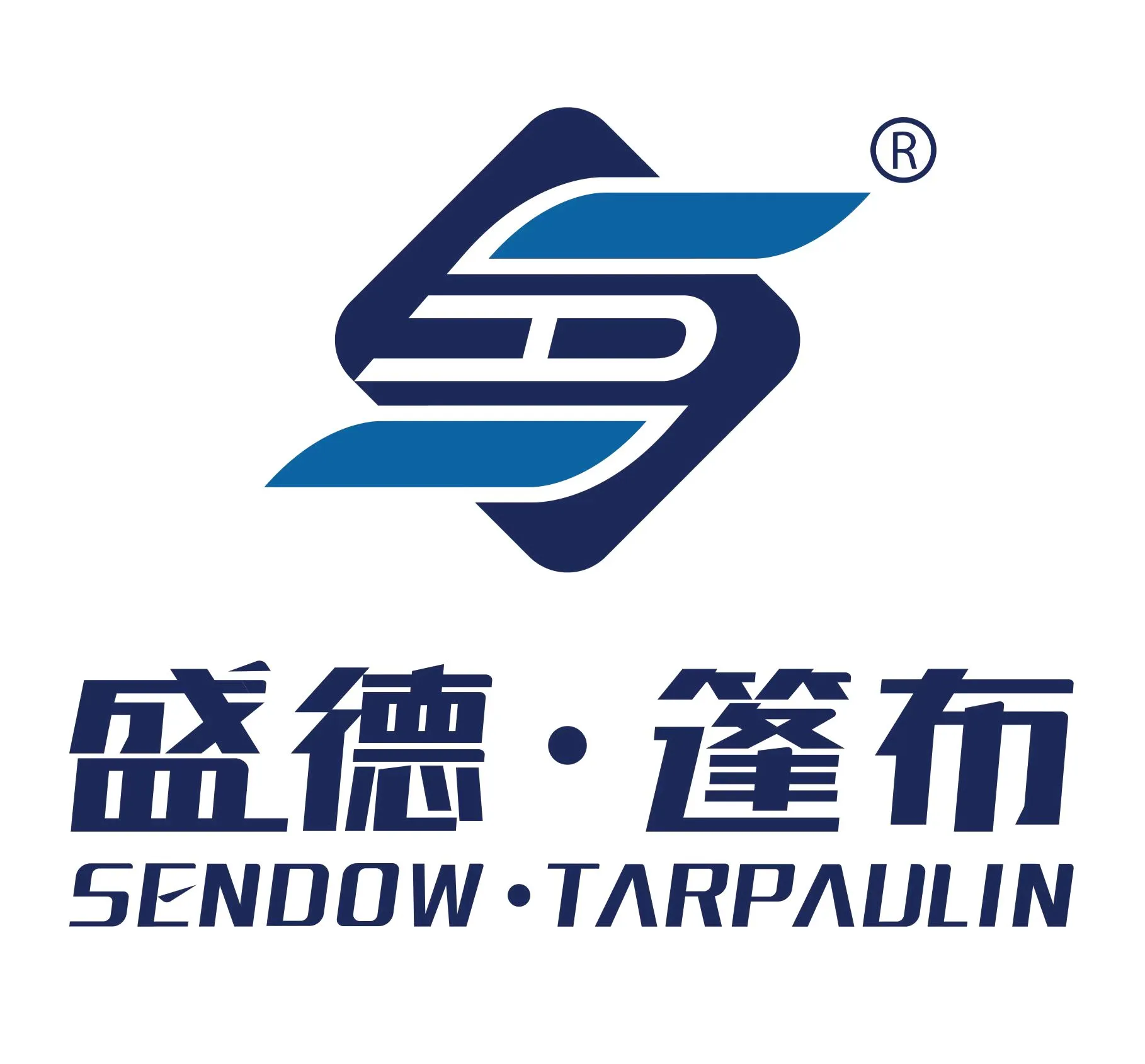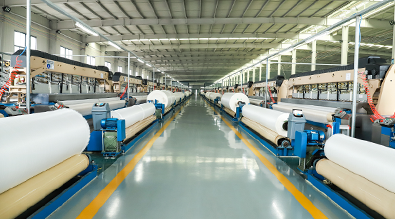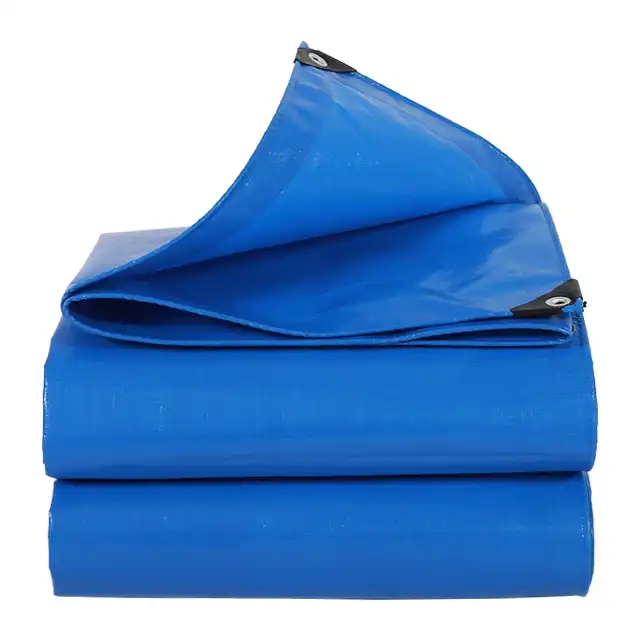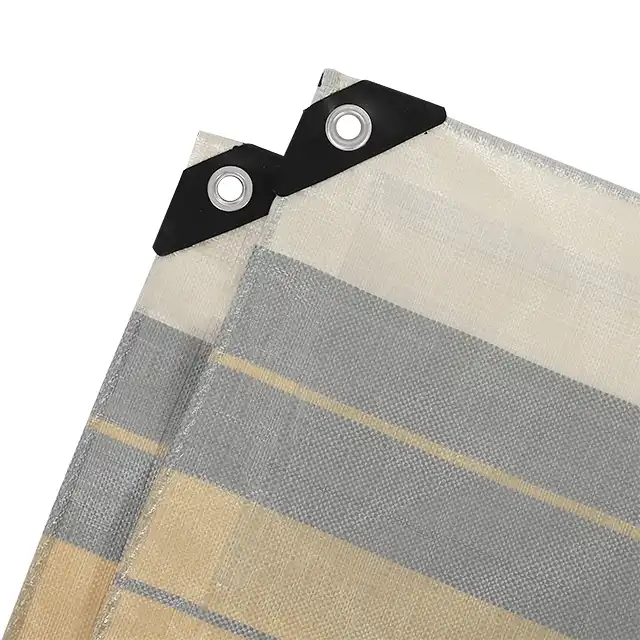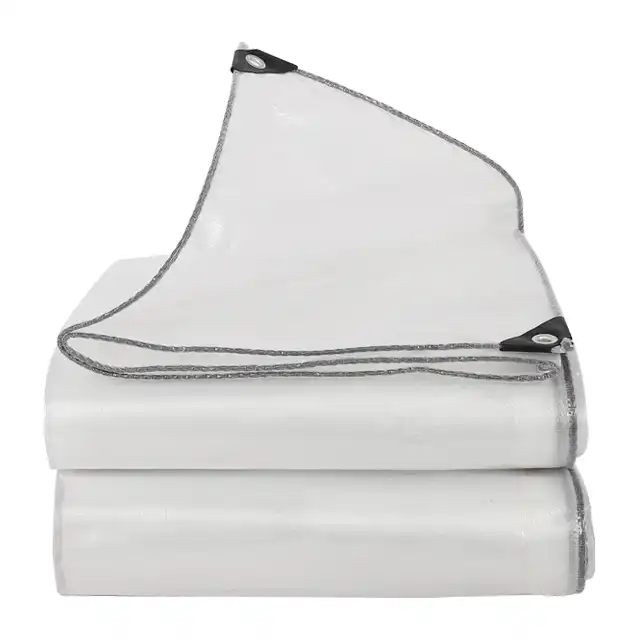Why Tarpaulins Are the Ultimate Weather-Resistant Cover?
In an era where protecting assets from unpredictable weather conditions has become increasingly important, tarpaulins have emerged as the premier solution for weather resistance. These versatile covers provide exceptional protection against rain, sun, snow, and wind while offering durability that few other materials can match. Tarpaulins, commonly known as tarps, have evolved from simple canvas sheets to sophisticated polyethylene products engineered to withstand the harshest environmental conditions. Their remarkable combination of lightweight construction, impressive strength, and complete waterproofing capabilities makes them the ultimate weather-resistant cover for countless applications across industries and personal use scenarios.
The Superior Construction of Weather-Resistant Tarpaulins
Advanced Materials Engineering for Ultimate Protection
The exceptional weather resistance of modern tarpaulins stems from their sophisticated construction process. Today's high-quality tarps are manufactured using high-density polyethylene (HDPE) fibers that are tightly woven into a durable fabric base. This fabric is then laminated on both sides with low-density polyethylene (LDPE) coating, creating a completely waterproof barrier. The manufacturing process employed by industry leaders like Linyi Shengde Plastic Co., Ltd. involves multiple quality control steps, ensuring that each tarpaulin meets rigorous standards. Their production involves specially designed yarn extruding machines that can produce yarn thickness from 400D to 2500D, giving their tarpaulins exceptional strength. The weaving process utilizes advanced water-jet looms that create seamless fabrics with widths ranging from 1.5m to 5m. This seamless construction is critical for weather resistance, as it eliminates potential failure points where water might penetrate. The resulting tarpaulin product features mesh counts ranging from 10x10 to 14x14, providing optimal balance between flexibility and strength while maintaining complete protection against all weather elements.
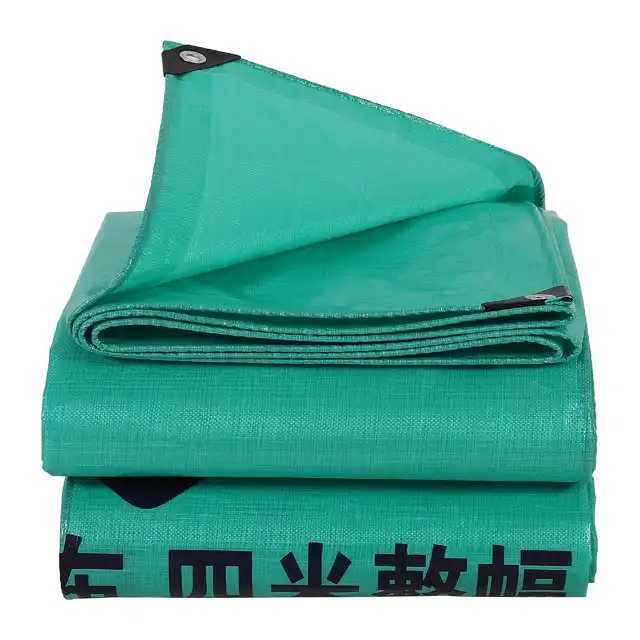
UV Resistance and Weatherproofing Technologies
What truly sets premium tarpaulins apart is their built-in UV resistance and comprehensive weatherproofing technologies. High-quality tarpaulins from manufacturers like Sendow incorporate UV inhibitors that prevent degradation from solar radiation. These UV treatments, ranging from 1% to 7% depending on the intended application, significantly extend the tarpaulin's usable lifespan by preventing the breakdown of polymer chains that typically occurs with prolonged sun exposure. The weatherproofing process involves applying specialized coatings that create a fully waterproof surface while maintaining the tarpaulin's flexibility across extreme temperature variations. This "Arctic Flexibility" feature allows the tarpaulin to remain pliable and functional even in sub-zero temperatures, unlike many other covering materials that become brittle and prone to cracking in cold weather. Additionally, the anti-corrosion properties built into the tarpaulin's coating prevent moisture-driven degradation, ensuring that the cover maintains its integrity even when subjected to constant moisture exposure. This comprehensive approach to weather resistance makes tarpaulins uniquely suited for long-term outdoor protection in all climate conditions.
Structural Design for Maximum Weather Resistance
The structural design elements of high-performance tarpaulins significantly contribute to their weather resistance capabilities. Quality tarpaulins feature reinforced edges with double or triple stitching that prevents fraying and extends the product's lifespan. Strategic placement of grommets or eyelets, typically made from corrosion-resistant materials, allows for secure anchoring that prevents wind damage while maintaining the tarpaulin's waterproof integrity. The thickness of premium tarpaulins, ranging from 7 to 12 mil (thousandths of an inch), provides sufficient strength to resist tearing from wind pressure or accumulated precipitation weight. Middle-duty PE tarpaulins from manufacturers like Sendow weigh between 100gsm and 180gsm, offering an optimal balance between durability and manageability. This careful engineering of structural elements ensures that the tarpaulin can withstand sustained exposure to harsh weather conditions without compromising its protective function. The combination of tear resistance, waterproofing, and structural integrity makes these tarpaulins capable of providing consistent protection against rain, snow, hail, and wind—truly making them the ultimate weather-resistant cover for any outdoor application.
Versatility and Adaptability Across Different Weather Conditions
All-Season Performance Capabilities
One of the most remarkable aspects of modern tarpaulins is their exceptional adaptability across different seasons and weather conditions. Unlike specialized weather protection products that perform well in specific conditions but fail in others, high-quality tarpaulins maintain their functionality year-round. During rainy seasons, the 100% waterproof nature of PE tarpaulins ensures complete protection from moisture. The laminated LDPE coating prevents any water penetration, while the tarpaulin's structural design allows for proper water runoff, preventing pooling that could lead to damage. In summer months, the UV-treated fabric provides critical protection against the sun's harmful rays, with premium tarpaulins offering specialized sun shade capabilities that reduce heat build-up beneath the cover. This makes them ideal for applications like car canopies and picnic shelters. During winter, the anti-freezing properties and arctic flexibility of quality tarpaulins keep them functional even in sub-zero temperatures, allowing them to provide continuous protection for stored equipment, building materials, or agricultural products. This consistent performance across all seasons makes tarpaulins from manufacturers like Sendow Tarpaulin the preferred choice for year-round weather protection in diverse climates around the world.
Application-Specific Weather Resistance Features
The versatility of tarpaulins extends to their ability to be customized for specific applications with enhanced weather resistance features. For agricultural applications, tarpaulins can be manufactured with specialized formulations that provide extended UV protection for greenhouse fabrics or impermeable barriers for aquaculture operations. Construction industry applications benefit from tarpaulins with reinforced tear resistance and heavy-duty waterproofing that can withstand the rigors of building sites. Transportation applications like truck covers require tarpaulins with exceptional wind resistance and durability to protect cargo during transit. Manufacturers like Linyi Shengde Plastic Co., Ltd. have developed extensive expertise in creating application-specific tarpaulins that address the unique weather challenges of different industries. With available weights ranging from lightweight 65gsm to heavy-duty 280gsm, and custom sizes made upon request, these tarpaulins can be precisely matched to specific weather protection requirements. The company's experience in producing tarpaulins for diverse applications across more than 30 countries has led to innovations in weather resistance that address regional climate challenges from the harsh winters of Canada to the intense UV exposure of equatorial regions.
Adaptability Through Customization Options
The adaptability of tarpaulins to various weather conditions is further enhanced through extensive customization options offered by leading manufacturers. Companies like Sendow Tarpaulin provide customized solutions that address specific weather challenges through variations in material composition, thickness, and treatment processes. Custom color options serve both aesthetic preferences and practical weather considerations, with reflective colors reducing heat absorption in hot climates and darker shades maximizing solar heat gain in colder regions. Size customization allows for perfect coverage of specific items or areas, eliminating gaps that could allow weather intrusion. The availability of OEM/ODM services means that tarpaulins can be designed with specialized features for unique weather conditions or applications. The monthly production capacity of 4000MT ensures that even large-scale custom projects can be accommodated without compromising quality or delivery timelines. This level of customization makes tarpaulins uniquely adaptable to changing weather patterns and diverse protection needs, from small leisure tents to massive agricultural covers. The ability to precisely specify material characteristics, dimensions, and treatment processes means that each tarpaulin can be optimized for maximum weather resistance in its intended application, truly making them the ultimate weather-resistant covering solution.
Economic and Practical Benefits of Tarpaulin Weather Protection
Cost-Effectiveness Compared to Alternative Weather Protection Methods
When evaluating weather protection options, tarpaulins consistently deliver superior value compared to alternative methods. The initial investment in a quality tarpaulin is significantly lower than constructing permanent shelters or purchasing specialized weather protection equipment. For example, protecting construction materials with a heavy-duty tarpaulin costs just a fraction of building a temporary storage structure, while providing comparable weather protection. Beyond the initial cost advantage, tarpaulins offer exceptional longevity when properly maintained. Premium tarpaulins from manufacturers like Linyi Shengde Plastic Co., Ltd. are engineered to last for years even under constant exposure to the elements, with their UV-treated polyethylene maintaining integrity far longer than standard covering materials. This extended lifespan dramatically improves the return on investment compared to less durable alternatives that require frequent replacement. The versatility of tarpaulins further enhances their economic value by eliminating the need for multiple specialized covering solutions. A single high-quality tarpaulin can serve numerous purposes over its lifetime, from protecting equipment during storage to providing emergency shelter during severe weather events. This multi-functionality makes tarpaulins the economically prudent choice for comprehensive weather protection across both personal and commercial applications.
Practical Advantages in Daily Weather Protection Scenarios
The practical benefits of tarpaulins in everyday weather protection scenarios cannot be overstated. Their lightweight yet durable construction makes them exceptionally easy to deploy, requiring minimal effort to provide immediate protection when weather conditions change unexpectedly. Unlike rigid shelters or permanent structures, tarpaulins can be quickly repositioned or reconfigured as needed to address shifting weather patterns or changing protection requirements. The shrink-proof nature of quality tarpaulins ensures they maintain their dimensions after repeated use, eliminating the frustration of covers that no longer fit properly after exposure to moisture. Their anti-corrosion properties protect not only the items beneath the cover but also the tarpaulin itself, preventing the formation of mold or mildew that can damage both the cover and the protected items. For applications like goods protection during shipping or storage, truck covers, or leisure activities like camping, the practical advantages of tarpaulins make them the preferred weather protection solution. Manufacturers like Sendow Tarpaulin offer features like tear resistance and waterproofing that ensure reliable performance in demanding conditions. The combination of durability, ease of use, and consistent protection makes tarpaulins the practical choice for daily weather protection across countless scenarios.
Environmental Performance and Sustainability Factors
In today's environmentally conscious marketplace, the sustainability aspects of tarpaulins represent an increasingly important benefit. Modern manufacturing processes employed by leading producers like Linyi Shengde Plastic Co., Ltd. have significantly reduced the environmental impact of tarpaulin production while maintaining exceptional weather resistance properties. The durability of high-quality tarpaulins contributes directly to sustainability by reducing replacement frequency and associated resource consumption. A single premium tarpaulin can replace multiple less durable covers over its lifespan, substantially reducing waste generation. The reusability of tarpaulins across different applications further enhances their environmental performance by maximizing the utility derived from the resources used in their production. For agricultural applications, specialized tarpaulins can reduce water consumption by preventing evaporation from irrigation systems or aquaculture facilities. In construction settings, properly deployed tarpaulins prevent material damage from weather exposure, reducing waste and conserving resources. The highly efficient manufacturing processes developed by industry leaders minimize energy consumption while maximizing output quality, with production facilities capable of producing over 100 tons of tarpaulin sheets daily with optimized resource utilization. These environmental benefits, combined with outstanding weather protection performance, make modern tarpaulins the sustainable choice for weather-resistant covering needs.
Conclusion
Tarpaulins have rightfully earned their reputation as the ultimate weather-resistant cover through their exceptional combination of durability, versatility, and performance across all weather conditions. From specialized agricultural applications to construction site protection, from transportation covers to recreational use, modern PE tarpaulins provide unmatched protection against rain, sun, wind, and snow. When seeking the highest quality tarpaulins with superior weather resistance, partnering with an experienced manufacturer like Linyi Shengde Plastic Co., Ltd. ensures access to products engineered for optimal performance in the most challenging conditions.
With 20 years of industry experience, ISO 9001:2015 certification, and a commitment to continuous product innovation, Shengde stands ready to meet your specific tarpaulin requirements with customized solutions that deliver outstanding weather protection. Contact us today to discuss how our premium tarpaulins can address your weather protection challenges and provide lasting value. For more information or inquiries, please email us at info@shengdetarp.com.
References
1. Johnson, R. M. (2023). Advanced Polyethylene Technologies in Modern Tarpaulin Manufacturing. Journal of Industrial Materials, 45(3), 112-129.
2. Zhang, L., & Thompson, K. (2022). Comparative Analysis of Weather-Resistant Covering Solutions for Agricultural Applications. Agricultural Engineering International, 24(2), 78-96.
3. Patel, S. (2023). UV Degradation Resistance in Polymer-Based Weather Protection Materials. Polymer Degradation and Stability, 188, 109-121.
4. Williams, D. H., & Garcia, M. (2024). Environmental Performance Assessment of Polyethylene Tarpaulins in Construction Applications. Sustainable Construction Materials, 12(1), 45-62.
5. Chen, X., et al. (2023). Advancements in Waterproof Coating Technologies for Flexible Covering Materials. Progress in Organic Coatings, 176, 107-118.
6. Rodriguez, A. B., & Kim, J. (2024). Mechanical Properties of Reinforced Tarpaulin Systems Under Extreme Weather Conditions. Journal of Materials in Civil Engineering, 36(4), 231-247.
